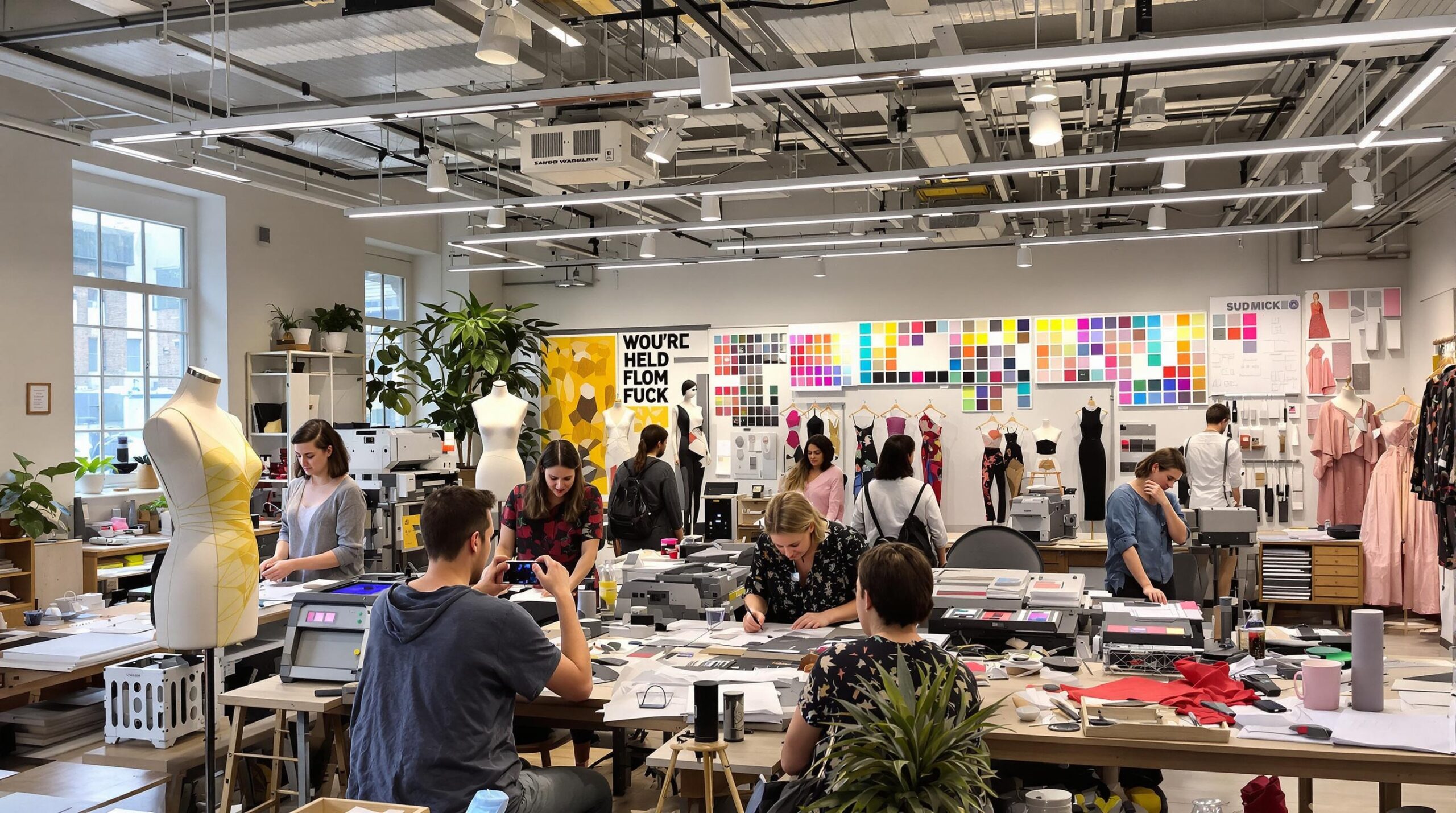Fashion has long struggled with its environmental footprint. Today, designers, brands, and technologists are rewriting industry standards. Through inventive practices and novel technologies, the future of sustainable fashion is brighter than ever.
Recycled and Upcycled Materials Redefine Design
The shift from traditional raw materials toward recycled fibers is gathering pace. Brands now use post-consumer waste like plastic bottles to create polyester yarns. This approach conserves resources and diverts waste from landfills. Upcycling transforms discarded garments or textiles into completely new pieces, extending their lifecycle. Designers such as Stella McCartney and Eileen Fisher have built collections around these principles. The result is a variety of fresh aesthetics that do not sacrifice sustainability for style.
Furthermore, corporations are collaborating with textile innovators to develop closed-loop recycling systems. Textile-to-textile recycling minimizes the consumption of virgin materials. It ensures that garments can be continually reincarnated, shrinking fashion’s environmental impact while creating new economic opportunities.
Biodegradable and Bio-Based Alternatives Advance
Conventional fabrics like polyester linger in landfills for centuries. Biodegradable textiles, however, break down naturally within a few years. Fabric innovators employ renewable sources such as eucalyptus, bamboo, hemp, and even mushroom mycelium. These materials not only reduce pollution but also use less water and fewer toxic chemicals during production.
One of the most exciting bio-based innovations comes from lab-grown leather and silk alternatives. Companies like Mycoworks and Bolt Threads create vegan leather using mycelium, a mushroom root structure. These materials mimic the strength and look of animal-based leather without involving livestock agriculture or toxic tanning agents. Such advancements are closing the gap between lab innovation and mainstream fashion markets.
3D Printing and Digital Fabrication Cut Waste
Traditional garment manufacturing generates significant textile scrap. By contrast, 3D printing builds garments layer by layer according to exact specifications, generating virtually no excess. This technology enables designers to experiment with complex structures, customized fits, and unique patterns. Digital fabrication supports on-demand production, reducing inventory surplus and unsold stock.
Fashion brands like Adidas use 3D-printed midsoles for custom-fit sneakers. Meanwhile, luxury designers experiment with 3D-printed accessories and garments. This convergence of sustainability and creativity pushes industry boundaries while keeping material usage efficient and targeted.
Zero-Waste Pattern Making Gains Traction
Most garment patterns leave 15-20% of fabric as unused scrap. Zero-waste pattern making uses mathematical precision to fit entire garment pieces together without leftover cuts. Designers reimagine how clothing is assembled, creating innovative silhouettes and textures in the process.
Pioneers like Timo Rissanen and Holly McQuillan have showcased how thoughtful design eliminates waste entirely. Today, more brands incorporate zero-waste aesthetics. Consumer response has proven positive, signaling that sustainable techniques are not only ethical but also commercially viable.
Water-Saving and Non-Toxic Dyeing Methods
Traditional dyeing processes consume thousands of liters of water and often pollute rivers with toxic runoff. New dyeing technologies use either supercritical CO2 or minimal water. Waterless dyeing reduces energy consumption, saves water, and eliminates hazardous chemicals. This technique delivers vibrant hues while protecting both workers and ecosystems.
Brands such as Nike and Levi’s have already adopted water-saving processes at scale. Small-scale innovations, like natural dyeing with plant-based pigments, are gaining traction in artisan communities. These advances prove beneficial for both large industrial supply chains and local craftspeople.
Artificial Intelligence Optimizes Supply Chains
Artificial intelligence (AI) rapidly transforms how brands forecast demand, manage stock, and reduce waste. Predictive analytics match production closely to real-time consumer preferences, preventing overproduction. AI-driven software also identifies efficient resource use and green alternatives in complex global supply chains.
Zara and H&M leverage AI to swiftly respond to fashion trends while keeping inventory lean. Startups use AI to track garment lifecycles and improve recyclability. In combination, these strategies produce more sustainable operations while meeting customer expectations for fast, affordable fashion.
On-Demand and Localized Production Models
Large-scale batch manufacturing wastes resources when items remain unsold. On-demand production reverses this model, creating garments as customers order them. Brands such as Ministry of Supply use automated knitting machines and smart factories to deliver custom-fit pieces quickly and efficiently.
Localized production reduces the carbon footprint of shipping goods long distances. Micro-factories and local workshops enable small-batch manufacturing close to end consumers. This agility allows brands to meet changing demand while empowering local economies. The fashion industry moves closer to circular and resilient business models.
Digital Innovation Empowers Transparency and Traceability
Blockchain technology and digital labeling are increasing consumer awareness about the origins of their garments. Brands now offer transparency from fiber sourcing to final sale. By scanning QR codes or blockchain tags, customers can access a garment’s complete journey, including labor conditions and environmental impact.
This transparency encourages responsible choices and keeps brands accountable. Emerging tools, such as digital passports for clothing, streamline recycling and resale. Technology ultimately bridges the gap between ethical production and consumer demand for insight.
The Expanding Role of Circular Economy Principles
At the heart of sustainable fashion lies the idea of circularity. The linear “take-make-dispose” model is rapidly falling out of favor. Leading brands and startups focus on designing for longevity, repairability, and recycling. Take-back schemes, where old garments are collected and reintroduced into the production cycle, are becoming more widespread.
Rental services and resale platforms extend clothing lifecycles, reducing the need for constant production of new items. These approaches ensure that fashion’s environmental burden lessens over time. Consumer engagement grows as people see tangible results of circular practices in their wardrobes.
Looking Ahead: Innovation, Collaboration, and Consumer Power
Sustainable fashion is no longer a niche, but a movement propelled by relentless innovation and collaboration across the industry. As brands experiment with new materials, processing techniques, and digital tools, they pave the way for a less wasteful future.
The power of consumers to demand ethical and transparent supply chains cannot be understated. Each purchase becomes a vote for the kind of world people want. Together, industry leaders, technologists, and buyers are crafting a more responsible and inspiring fashion landscape.

